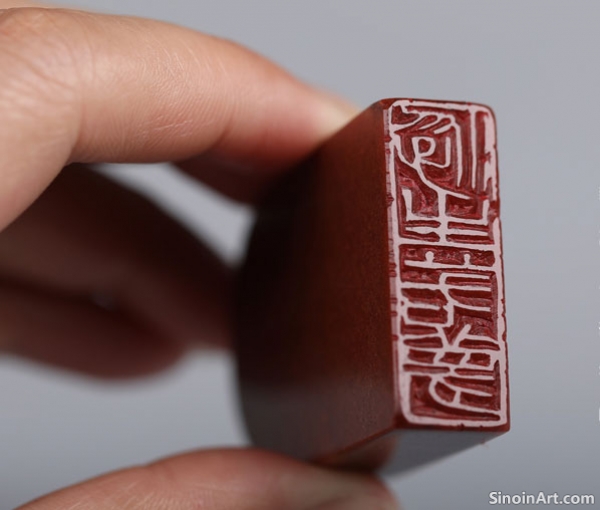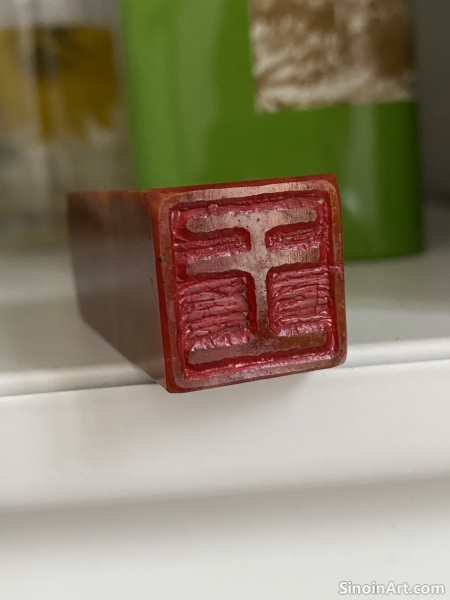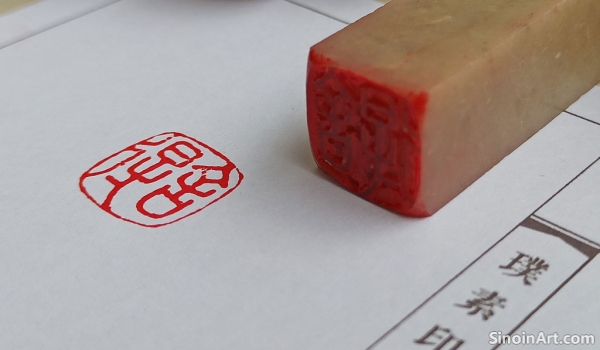The Art of the Name Seal: An Introduction to Chinese Personal Seals
|
The Chinese name seal, or personal seal, is far more than a mere identifier. It's a form of artistic expression, a symbol of identity, and a reflection of personal values and aspirations. Rooted in ancient traditions, the art of carving these seals, known as zhuanke, has evolved over millennia, becoming a rich and integral part of Chinese culture. Name seals are typically created from materials such as stone, jade, or wood, and often bear the individual's name or a chosen personal motto.  The history of name seals can be traced back to the Shang Dynasty (c. 1600-1046 BC), where seals were initially used for authentication and verification. Over time, their use expanded to include personal identification, artistic expression, and a symbol of social status. During the later dynasties, seals became not only functional tools but also intricate works of art, with calligraphic scripts transformed into carved reliefs. The use of seals became widespread, both for personal and official documentation.  The techniques employed in creating name seals are varied, demanding both technical skill and artistic sensibility. The process begins with the selection of the stone, which is then carefully polished and prepared. The desired inscription is then written in reverse on the stone, often in a specific calligraphic style. The carver then uses specialized tools to incise or raise the characters from the stone surface, paying close attention to line quality, balance, and negative space. The choice of font and the actual process of carving the seal are equally important.  The materials used for making name seals are diverse, each offering its unique aesthetic qualities. Stone is perhaps the most common material, with varieties like soapstone, agate, and Shoushan stone highly prized for their carving characteristics and visual appeal. Jade, a symbol of prestige and wealth, is also a popular choice, although more challenging to carve. Wood, bone, and even metals have also been used, each contributing to the uniqueness of the piece. The material choice is often as important as the carved inscription itself. The creation of a name seal is a deeply personal process. The chosen characters, calligraphic style, material, and overall design reflect the individual's tastes, interests, and personality. Name seals often become cherished possessions, used to stamp calligraphy, paintings, and personal documents. They serve as a powerful connection to tradition and an affirmation of personal identity, demonstrating the enduring legacy of this unique art form. |
Tag : Chinese Name Seal, Personal Seals, Seal Carving, Zhuanke Art, Chinese Calligraphy
Related information
- Tools of the Trade: Essential Equipment for Seal Carving
- Characters and Inscriptions on Collector's Seals
- Design Elements of Studio Seals: Beyond Just the Name
- Inscriptions of Studio Seals: Unveiling the Character of the Space
- Form and Design of Leisure Seals: Embracing Freedom and Creativity
This article explores the essential tools and materials used in Chinese seal carving, focusing on the importance of carving knives, stones, ink pads, and other specialized equipment.
The characters and inscriptions on collector's seals often provide valuable information about the collector, their interests, and their relationship to the artwork or object being marked. The text included on the seals often conveys important information about the collector’s personality and preferences.
This article delves into the design elements of studio seals, exploring how features like borders, patterns, and pictorial elements enhance the seal's artistic merit and meaning.
This article delves into the various types of inscriptions found on studio seals, exploring their meanings and how they reveal the nature and purpose of the studio or hall.
This article explores the diverse range of shapes, forms, and design elements found in leisure seals, highlighting the freedom of expression that distinguishes them from other types of seals.